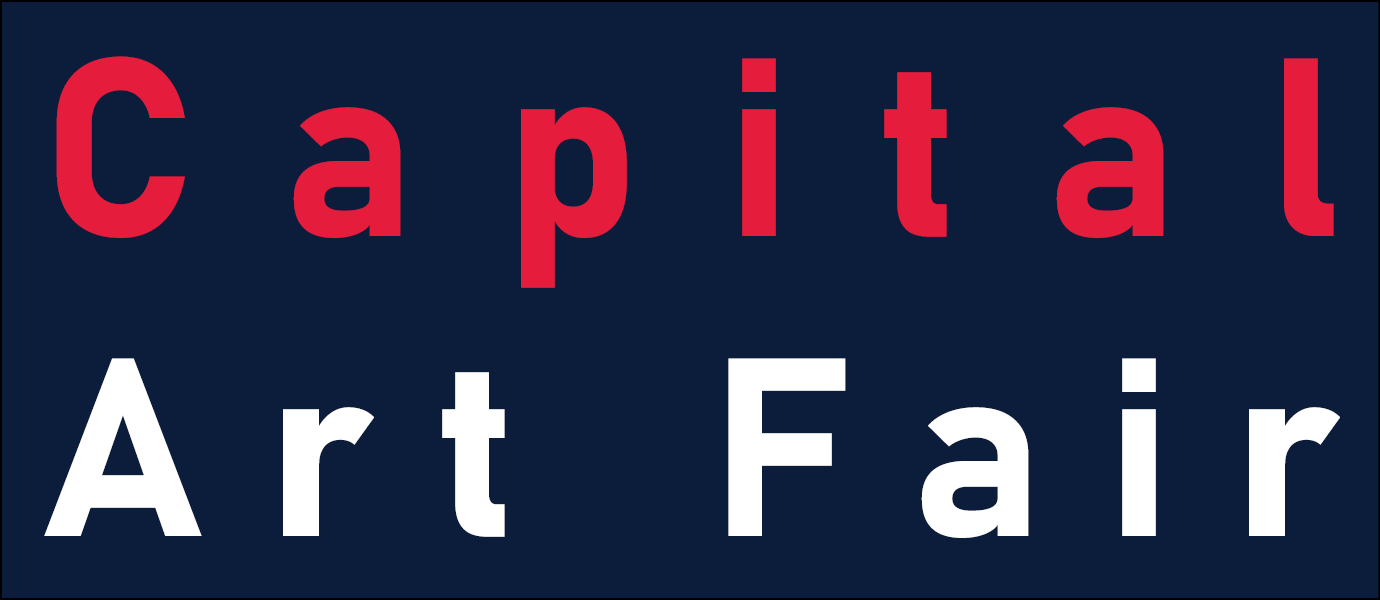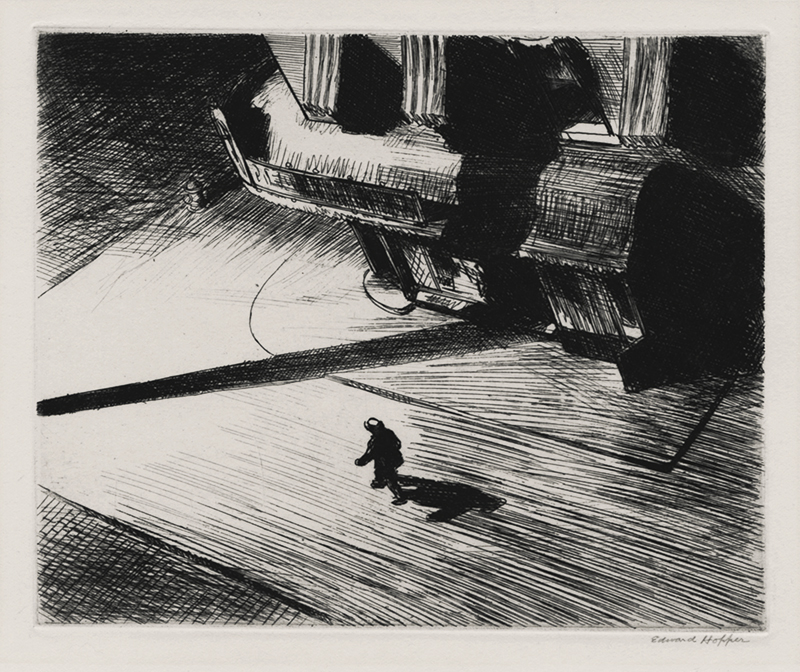Night Shadows is an etching from 1921 by American artist Edward Hopper. This impression is from the portfolio, Six American Etchings, that was published in 1924 by The New Republic and was printed by Peter J. Platt on ivory Handmade Van Gelder wove paper. Night Shadows is pencil signed by the artist and the reference is Levin 82. Zigrosser thought that the 1924 edition might have exceeded 500 impressions. The dimensions are 6-7/8 x 8-1/4 inches platemark.
Six American Etchings (Series I) was a portfolio offered in December 1924 by The New Republic. The subscription form offered readers a year's subscription, with this portfolio, for $8.00. The artists included Peggy Bacon, Ernest Haskell, Edward Hopper, John Marin, Kenneth Hayes Miller, and John Sloan. Each impression was pencil signed and was printed by Peter J. Platt on ivory Handmade Van Gelder wove paper. Zigrosser thought that the edition might have exceeded 500 impressions. Night Shadows is a social realists view of the urban landscape; a man walks along a broad, empty sidewalk, with night lights casting long, dark shadows. Night Shadows suggests the aloneness of man within the city but Hopper refused to interpret his imagery, leaving the storyline to the viewer's imagination. Night Shadows is among the most iconic etchings created in the twentieth century.
Edward Hopper, painter, printmaker, and illustrator, was born in Nyack, New York to Elizabeth and Garrett Hopper on 22 July 1882. In the winter of 1899/1900, he studied illustration at the Correspondence School of Illustration in New York City. Between 1900 and 1906, Hopper was enrolled in the New York School of Art where he studied illustration, painting, and life drawing. The roster of his instructors included Arthur Keller, Robert Henri, William Merritt Chase, and Kenneth Hayes Miller.
Hopper was hired in 1906 as an illustrator for the C. C. Phillips agency in New York but his employment was brief as by October he sailed for Paris. He seemed able to support his extensive European travels by continuing his commercial work. In 1910, Hopper settled in New York and began earning his living with illustration while he painted in his off hours.
Hopper was the quintessential American realist. His painting, Sailing, was included in the 1913 Armory Show (International Exhibition of Modern Art) and over the next several years his paintings were included in numerous exhibitions at the MacDowell Club of New York. He began etching in 1915 and, in the years 1918 through 1924, he was included in the annual An Exhibition of Etchings sponsored by the Chicago Society of Etchers. In 1932, Hopper was included in the first Whitney Museum of American Art Biennial, and in almost every later Whitney Biennial and Annual.
His first solo exhibition was mounted in 1920 and ten years later his work began to be acquired by museums. Hopper’s first retrospective was mounted in 1933 at the Museum of Modern Art, New York. In 1953, Hopper was one of four artists chosen by the American Federation of Arts to represent the United States in the Venice Biennale.
Edward Hopper was a member of and exhibited with the American Society of Independent Artists, the Brooklyn Society of Etchers, the Chicago Society of Etchers, Print Makers Society of California, and the National Institute of Arts and Letters. He was elected to be an associate of the National Academy Design which he declined. Hopper’s work is represented in the Museum of Fine Arts Boston; the Art Institute of Chicago; the Harvard Art Museums, Fogg Art Museum, Cambridge; the Sheldon, University of Nebraska, Lincoln; the Walker Art Center, Minneapolis; the Museum of Modern Art, the Metropolitan Museum of Art, and the Whitney Museum of American Art, New York; the Philadelphia Museum of Art; and the National Gallery of Art and the Smithsonian American Art Museum, Washington, D.C.
Edward Hopper died in his studio at 3 Washington Square North, New York, on 15 May 1967.



